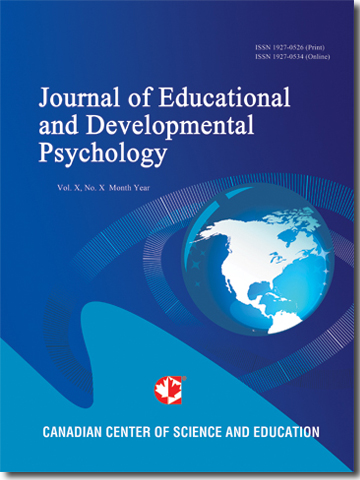Self-Efficacy and Self-Regulated Learning Strategies for English Language Learners: Comparison between Chinese and German College Students
- Chuang Wang
- Götz Schwab
- Pete Fenn
- Mei Chang
Abstract
Two hundred Chinese and 160 German college students completed two surveys about their self-efficacy beliefs and self-regulated learning (SRL) strategies learning English in China and Germany. All participants took an English language test to measure their English proficiency. Cronbach’s alpha was used to check the internal consistency of the surveys, and confirmatory factor analysis was employed for the construct validity. Factorial invariance of the self-efficacy survey was tested between Chinese and German students. Both surveys turned out to be reliable and valid with satisfactory goodness-of-fit indices. The self-efficacy survey was found to have the same latent structure between Chinese and German students. The SRL strategy survey, however, was found to have a different latent structure. Mean differences between Chinese and German students were compared with multivariate analysis of variance, and relationships between self-efficacy, SRL strategies, and English proficiency were examined with structural equation modeling. Chinese students reported a lower level of self-efficacy beliefs but their English proficiency was not significantly different in comparison to German students. Their use of SRL strategies was not significantly different, either. Statistically significant relationships were noted between self-efficacy, use of SRL strategies, and English language test scores. Female students reported higher levels of self-efficacy beliefs but gained lower scores on the English language test in both countries. Implications of the results are discussed for English language instruction in both countries. Future studies are recommended to use the same English language test in two countries and to use a balanced sample between male and female students.
- Full Text:
 PDF
PDF
- DOI:10.5539/jedp.v3n1p173
Journal Metrics
(The data was calculated based on Google Scholar Citations)
1. Google-based Impact Factor (2021): 1.11
2. h-index (December 2021): 29
3. i10-index (December 2021): 87
4. h5-index (December 2021): N/A
5. h5-median (December 2021): N/A
Index
- Academic Journals Database
- CNKI Scholar
- Copyright Clearance Center
- CrossRef
- Elektronische Zeitschriftenbibliothek (EZB)
- EuroPub Database
- Excellence in Research for Australia (ERA)
- Harvard Library
- Jisc Library Hub Discover
- JournalSeek
- JournalTOCs
- LIVIVO (ZB MED)
- LOCKSS
- MIAR
- Open Access Journals Search Engine(OAJSE)
- PKP Open Archives Harvester
- Publons
- ROAD
- Scilit
- SHERPA/RoMEO
- Standard Periodical Directory
- Stanford Libraries
- Technische Informationsbibliothek (TIB)
- UCR Library
- UoB Library
- WorldCat
- Zeitschriften Daten Bank (ZDB)
Contact
- Carol WongEditorial Assistant
- jedp@ccsenet.org
